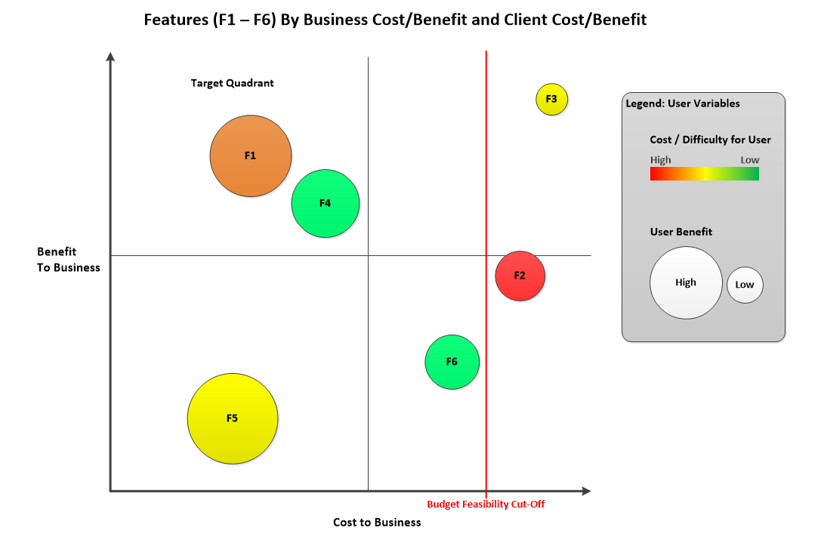The key to creating successful and user-friendly mobile experiences is empathy. Not the mushy kind, but the pragmatic kind of empathy in which you put yourself in the user’s shoes and try to really understand their needs and wants.
An easy shorthand is to factor these wants and needs based on the questions familiar to journalism students: who, what, why, when, where, and how.
Who
Who is your target user? Basic user demographics like age and gender are a must, but try to go beyond that— think about their desires, ambitions, obstacles, and pet peeves. Creating user personas for each of your expected types of users can help answer this question and design a better mobile experience.
What
What does your target user need or want that they cannot currently get at all or get easily? What are you considering to offer via mobile experiences to give the user what they want? Whatever you are offering should be related to your business but should focus on what is important most to the user.
Why
Why are users going to use your mobile solution? Your app should fulfill a need or want they have (in other words, it answers the “What” question). There needs to be a difference dramatic enough between using your app and the “next best thing” for them to bother remembering your URL or downloading your app.
When
When are your users most likely to engage with your mobile solution? And how often? The “When” can be in absolute terms (e.g. between 7PM and 10PM on weekdays, etc.) or in relative terms (during a workout, an hour after dinner, etc.) You should consider times of engagement to create an optimal experience for your user.
Where
Where are users most likely to engage with your app? Are there location-driven opportunities and challenges that exist? For example, monitoring swimming performance sounds great, but users can’t use a regular smartphone without adding some waterproof peripherals. On the other hand, mobile comparison shopping is likely to happen in retail stores and might be facilitated by barcode scanning or QR code reading capability, etc.
How
How are you going to reach your users? Once you have characterized your users by understanding the answers to all of the questions above you can understand how to effectively reach them.
There’s just one complication: for each answer to the “Who” Question, you need to answer each of the other questions. In other words, if you have two or more user types who represent distinctly different market segments, you have to answer all of the above questions for each of them to understand their needs in order to successfully create a great mobile experience that meets those needs.
So, lets run through an example of how to answer these questions. The scenario is this:
You work for ACME. ACME makes a line of gardening supplies and your mission is to make ACME the name brand in household gardening. Your marketing perspective is that providing “helpful” experiences rather than transaction / e-commerce support would best enhance the ACME brand. Let’s see if mobile solutions can assist in this mission.
Who are your users? You do some research and discover that 60% are men age 55 and over, and 40% are women age 55 and over. Note that 55+ year-old females (or older) can be potentially divided into 55+ year-old working females and 55+ year-old housewife females, creating three categories. Same, of course (and less stereotypically) can be done to the male demographic. For sake of illustration, the user segmentation has been kept simple here.
So now let’s make a chart of your analysis:
| Who | 55+ year-old males | 55+ year-old females |
| What (focusing on what is important most to each demographic) | Likes landscaping and decorative gardening support | Likes to multi-task and learn more about gardening while working in the garden. |
| Why | A mobile solution can help them integrate professional ideas with the realities of their actual garden shape, size, and other land features. They also want an easy way to transform landscaping ideas into shopping lists. This capability does not exist. The next best thing is hiring a professional landscaper. | They are busy and don’t have time for gardening. When they are gardening, they want to keep mentally active, and they want information that is contextually relevant to their actual gardening efforts, not generic gardening content. There is plenty of content out there from many sources but it is generic and interrupted by commercials. |
| Where | In the garden, outdoors. In gardening supply stores (Home Depot, etc.), on the ACME site | In the garden, outdoors |
| When | During gardening activity, mostly weekend afternoons but varies. After gardening activity, to shop for or reorder supplied needed for future gardening or landscaping activities. | During gardening activity, mostly weekend afternoons but varies. Housewives do majority of gardening in mid-afternoons on weekdays. |
| How (This is where your creativity and marketing intelligence really comes into play. At this stage, one of the smartest things you can do to ensure you come out with a market-beating product is partner with a digital strategist who will be able to provide up-to-the-minute trends and available technologies, while you provide marketing genius and expertise in your particular product(s)). | While reading about or listening to professional garden landscaping suggestions, the user will be able to use augmented reality to superimpose landscaping solutions against the backdrop of their actual garden. While doing so, they will be able to choose aspects of the solution they wish to buy and be presented with a shopping list containing the items needed to realize the solution. The user will have the option to purchase directly from ACME those items from that list which are sold by ACME. The rest will be turned into a checklist the user can use at Home Depot or other brick and mortar or online outlets. | User will be able to take pictures of their garden. The system will recognize the plants and structural elements in the pictures and create audio programming and a list of video tutorials specific to the user’s actual garden environment. The user can listen to the specialized content while gardening. Video articles/tutorials will be announced and the user can optionally pause garden work to sip some lemonade and watch a video relevant to them. |
You can see that the answer to “How” is a direct outcome of the answers to the preceding questions. This example was simplified. In reality, all the answers should have more depth.
The key to creating successful and user-friendly mobile experiences is empathy
The research you do about actual users is critical, but so is the effort you make to create a long list of candidate features that serve the user well. Above, for the 55+ year-old males, we created a single key feature for illustration, but your real list should be MUCH longer. The features you invent are business solutions that have a cost and a benefit to your business and to the user. After a list of features is created, you will need to triage the features based on a cost-benefit analysis.
Here is an example of a structure for starting the triage process.You can start by examining the identified features in terms of your business’s cost-benefit and the user’s cost/benefit, as well as considering your business’s absolute budgetary cut-off.

Prioritizing Features and Understanding What’s Doable
Once you have the possible features plotted for your mobile solution, then it comes down to making choices and trimming the set of features to a set this is financially feasible, provides the business adequate bang for the buck, and gives end-users a benefit that is compelling enough to outweigh user costs (alternatives to your solution, adoption challenges, etc.)
Let’s look at our example on the chart above. The enhanced reality option (F3) is so expensive for the business that it’s off the chart, but the targeted value-add programming (F4) is more beneficial for everyone: easy to use, provides high end-user benefit, moderate-high business benefit (primarily in the form of brand promotion) and is not very expensive to implement. Clearly a good candidate feature!
Additional Tips for Success
Now, let’s assume that that you’ve envisioned your customers’ new mobile experience and listed and prioritized your features as above. You are now well on your way to a unique and successful launch. Of course, you still have to design and build the application. A future article will cover the pitfalls and opportunities inherent in the design and build phases of the work, but in the meantime, I will leave you with the following suggestions:
- Work with a single vendor who is technologically excellent and has proven user experience design capabilities. This avoids finger-pointing between vendors and ensures that what is designed is efficiently buildable, and what is built in the end matches the design.
- Make sure the design reflects and enhances your brand, not only in terms of colors and logos but in the interaction model: if you have a playful brand, encourage your app designers to incorporate that into the interaction model.
- Don’t spend a year deciding between responsive and adaptive, native and hybrid. Work with a great partner firm, enable them to understand your challenges and let them create a roadmap for you. Review it, make a call, and get moving. If you don’t, technology will change and you will be going through the same process later, only it will belater and you will have lost time and with it, perhaps your competitive advantage.
- Make sure that as you spend money to keep up with a mobile market in flux, you don’t build so much diverse technology that maintenance costs become unsustainable for your business. Again, a good partner will work to shelter you from this outcome.
- An app on a small device is not the same thing as a small app. Scale and cost vary with scope, so scope should be your real point of control. Figure out all the options, then prioritize and manage your scope to cost constraints. If you look for bargain basement design and implementation, you might become one of the many rescue missions we do every year.
Good luck and have fun! Tell us how your experiences map to this framework by commenting below.







